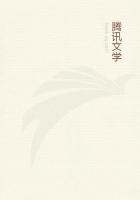While this is the beard-tongue commonly found in the Eastern United States, particularly southward, and one of the most beautiful of its clan, the western species have been selected by the gardeners for hybridizing into those more showy, but often less charming, flowers now quite extensively cultivated.Several varieties of these, having escaped from gardens in the East, are locally common wild.
The LARGE-FLOWERED BEARD-TONGUE (P.grandiflorus), one of the finest prairie species, whose lavender-blue, bell-shaped corolla is abruptly dilated above the calyx, measures nearly two inches long.Its sterile filament, curved over at the summit, is bearded there only.
Handsomest of all is the COBEA BEARD-TONGUE, a native of the Southwest, with a broadly rounded, bell-shaped corolla, hairy without, like the leaves, but smooth within.The pale purple blossom, delicately suffused with yellow, and pencilled with red lines - pathfinders for the bees - has the base of its tube creamy white.Few flowers hang from each stout clammy spike.
The more densely crowded spikes of the large SMOOTH BEARD-TONGUE(P.glaber), a smaller blue or purple flowered, narrower-leaved species, that shows an unusual preference for moist soil throughout its range, is, like the other beard-tongues mentioned, better known to the British gardener, perhaps, than to Americans, who have yet to learn the value of many of their wild flowers under cultivation.
The tall FOXGLOVE BEARD-TONGUE (P.digitalis), with large, showy white blossoms tinged with purple, the one most commonly grown in gardens here, escapes on the slightest encouragement to run wild again from Maine to Virginia, west to Illinois and Arkansas.
Small bees crawl into the broad tube, and butterflies drain the nectar evidently secreted for long-tongued bees, but without certainly transferring pollen.To insure cross-fertilization, the flower first develops its anthers, whose saw-edges grating against the visitors thorax, aid in sifting out the dry pollen;and later the style, which when immature clung to the top of the corolla, lowers its receptive stigma to oppose the bee's entrance.Professor Robertson has frequently detected the common wasp nipping holes with her sharp jaws in the base of the tube.
With remarkable intelligence she invariably chose to insert her tongue at the precise spots where the nectar is stored on either side of the sterile filament.
BLUE-EYED MARY; INNOCENCE; BROAD-LEAVED COLLINSIA(Collinsia verna) Figwort family Flowers - On slender, weak stalks; whorled in axils of upper leaves.Blue on lower lip of corolla, its middle lobe folded lengthwise to enclose 4 adhering stamens and pistil; upper lip white, with scalloped margins; corolla from 1/2 to 3/4 in.long, its throat about equaling the deeply 5-cleft calyx.Stem: Hoary, slender, simple or branched, from 6 in.to 2 ft.high.Leaves:
Thin, opposite; upper and more acute ones clasping the stem;lower, ovate ones on short petioles.Fruit: A round capsule to which the enlarged calyx adheres.
Preferred Habitat - Moist meadows, woods, and thickets.Flowering Season - April-June.
Distribution - Western New York and Pennsylvania to Wisconsin, Kentucky, and Indian Territory.
Next of kin to the great Paulonia tree, whose deliciously sweet, vanilla-scented, trumpet-shaped violet flowers are happily fast becoming as common here as in their native Japan, what has this fragile, odorless blossom of the meadows in common with it?
Apparently nothing; but superficial appearances count for little or nothing among scientists, to whom the structure of floral organs is of prime importance; and analysis instantly shows the close relationship between these dissimilar-looking cousins.Even without analysis one can readily see that the monkey flower is not far removed.
Because few writers have arisen as yet in the newly settled regions of the middle West and Southwest, where blue-eyed Mary dyes acres of meadow land with her heavenly color, her praises are little sung in the books, but are loudly buzzed by myriads of bees that are her most devoted lovers."I regard the flower as especially adapted to the early flying bees with abdominal collecting brushes for pollen - i.e., species of Osmia - and these bees," says Professor Robertson of Illinois, "although not the exclusive visitors, are far more abundant and important than all the other visitors together." For them are the brownish marks on the palate provided as pathfinders.At the pressure of their strong heads the palate yields to give them entrance, and at their removal it springs back to protect the pollen against the inroads of flies, mining bees, and beetles.As the longer stamens shed their pollen before the shorter ones mature theirs, bees must visit the flower several times to collect it all.
MONKEY-FLOWER
(Minulus ringens) Figwort family Flowers - Purple, violet, or lilac, rarely whitish; about 1 in.
long, solitary, borne on slender footstems from axils of upper leaves.Calyx prismatic, 5-angled, 5-toothed; corolla irregular, tubular, narrow in throat, 2-lipped; upper lip 2-lobed, erect;under lip 3-lobed, spreading; 4 stamens, a long and a short pair, inserted on corolla tube; pistil with 2-lobed, plate-like stigma.
Stem: Square, erect, usually branched, 1 to 3 ft.high.Leaves:
Opposite, oblong to lance-shaped, saw-edged, mostly seated on stem.
Preferred Habitat - Swamps, beside streams and ponds.
Flowering Season - June-September.
Distribution - Manitoba, Nebraska, and Texas, eastward to Atlantic Ocean.















